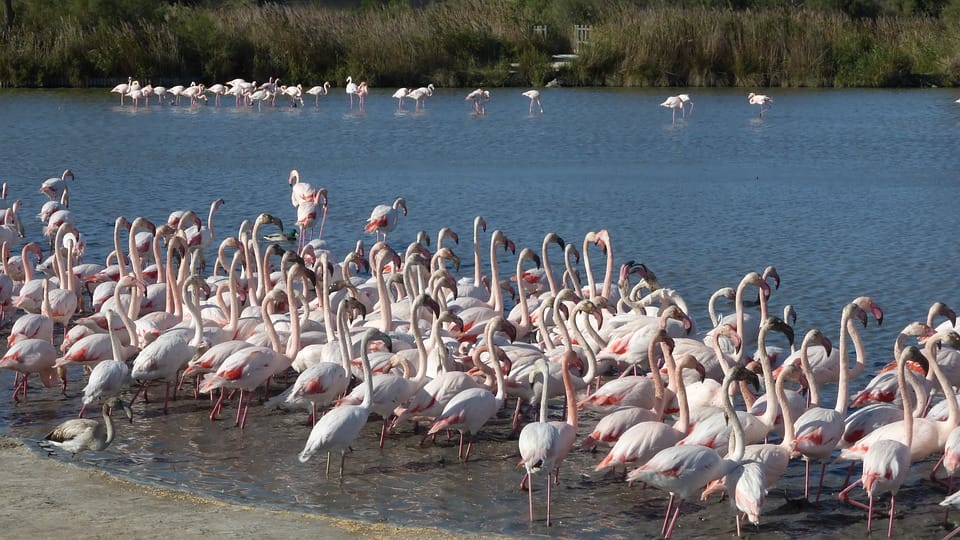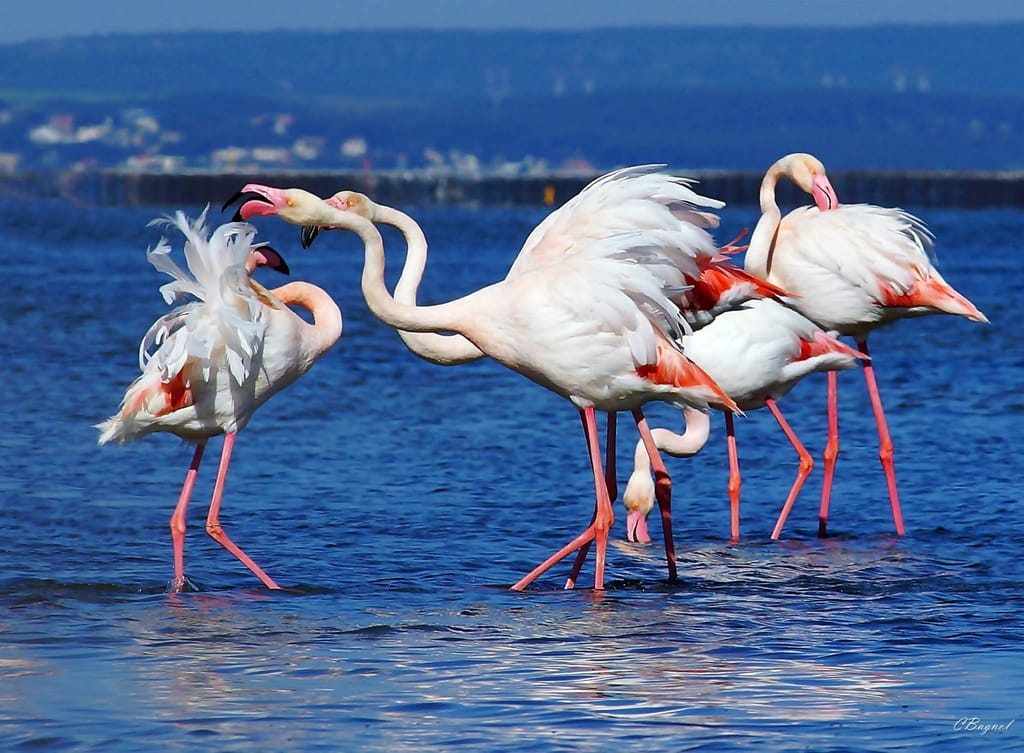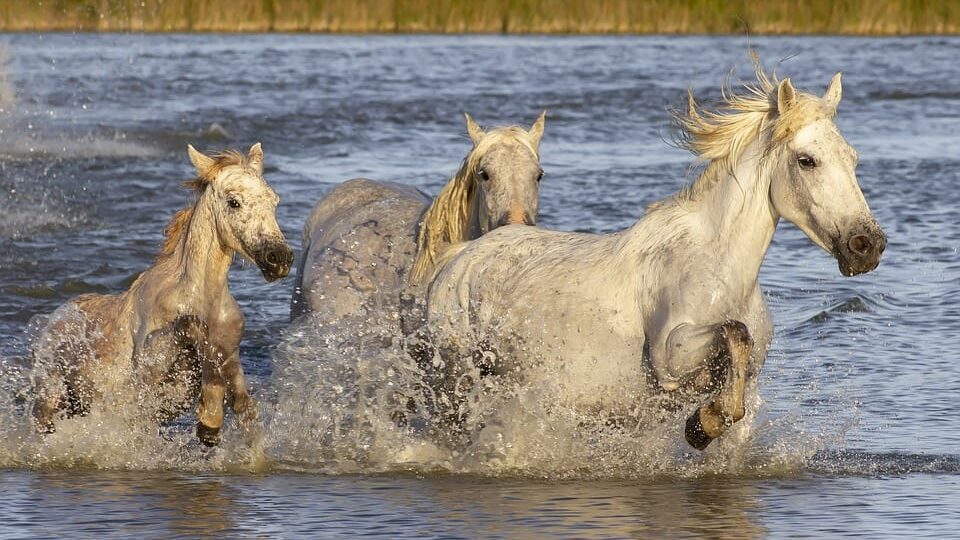What is Camargue Famous For?
Wetlands and wild horses are not usually related to the Cote d’Azur. In distinguishing style, the French Riviera raises images of upscale designer boutiques and modish women in high heels rather than wildflowers, white horses, and pink flamingos. But it is here, just 70 miles west of the city of Marseille, developing into a ravishing continuous landscape.
It is nice to get away from the traffic of the coast to find a serene spot to camp for the night. Not many tourists explore this end of the coast, and that might be why the Camargue, a stunning UNESCO-listed reserve, appears to flourish with its less-known profile. Camargue is a delight for those who are looking to escape the busyness of city life or those who want to discover a French Coast’s most obscured treasures.
The Camargue Wetlands: A Nature Buff’s Haven
The mouth of west Europe’s largest river delta is the Rhone Delta, and it is known to be a natural gem since the 1920s. Camargue is famous for its pink flamingos, black bulls, and white horses. It is a paradise for more than 400 unique species of migrating birds. Since the Middle Ages, rice and salt have been harvested here. On the line enclosing the plane areas of the ponds and marshlands lie some of the most incredible French Medieval cities. In entire Europe, this is one of the most protected and important natural reserves. It is also a UNESCO-recognized biosphere.
Interesting History and Sensational Wilderness
It comes as intriguing that humans devised a way to not just survive but also flourish in Camargue for more than 1000 years. They built drainages and dams, saltpans, and rice paddies; all still functional today. Aptly put by the National Geographic, this place is the Wild West of France. The geographic magazine also reveres the black fighting bulls and wild Camargue horses (white and one of the oldest breeds in the world). Many of the former are exported to Spain.

Here Are a Few Things Camargue is Famous For
A vast twist of pathways crosses over the reserve, making this spot ideal for pedestrians and cyclists. Many of the trails are closed off to vehicle traffic, though there are many unsealed roads that walkers could tread to reach every nook of the reserve. In addition, there are beaches in Camargue, and they are spectacular and rugged.
The unending flat horizon also means the coast here is susceptible to high winds, thus inviting kite surfers throughout the year. The Camargue is a biosphere. Their visitors will discover several historic ranches offering horseback riding tours to leave the trails, take on the marshlands, and see rare birds who tend to avoid trafficked roads. Visit in the summertime and indulge in activities that could also involve taking boat rides on the canals.
The Bullfighting Tradition
The Camargue boasts of a history of bullfighting- a tradition that has endured for many years. Today, the bull is not hurt in these activities but treated as the hero of the show as it shows its speed, strength, and agility in reacting to the brave bullfighters’ challenge. This is a thrilling experience to see involving huge animals charging in a dangerous dance tango with the skilled matadors. The bullfighting event is held from Spring to Autumn, so you might want to check with the tourist office for tickets and times of the shows at the Saintes-Maries-de-la-Mer arena.
Camargue White Horses
The white horses at Camargue are quite popular. These species are a special breed that is popularly one of the world’s oldest. Some of the horses are almost wild, while most are used by the local cowboys for herding and rounding up the black bulls. While visitors cannot ride the popular white horses, there are many stables across the area that provides riding opportunities to tourists. From as low as 15 euros an hour, you can ride a horse. This is an interesting way to walk across the fields and explore the marshes.
The Bulls
A proper blend of fear and wonder, the bulls of Camargue are something to see here. Bred for their meat and the show, these bulls are not domesticated. Their purpose is to perform in the games in the arenas or runs in the streets. The intelligent ones are identified early. The Camargue bulls are sturdy and never taller than 4-5 feet with long horns that point upward.
Pink Flamingos
The flamingos at the Camargue are part of the over 340 species of birds there. In the 1970s, a program was designed to protect these birds. Scientists then made an island on l’étang du Fangassier to spur the breeding program that eventually yielded much success.
How to Plan Your Camargue Visit
Visiting the Camargue with a rental car or camper van is not a bad idea at all, especially if you have got plenty of time. There is a possibility of you spending days in the wilderness and feeling like you have barely touched the surface. Here, there is more than 930 sq km of salt flats, marshlands, and lake to explore and having the luster sumptuousness to sleep deep in this amazing beauty- at one of the many designated campervan parking lots- is, without doubt, the most satisfying experience here. Most visitors come on day-trips from Marseille, Aix-en-Provence, and Avignon. That means that by the evening, you will have space for yourself.

Saintes-Maries de la Mer
Even though a decent rough-terrain vehicle will help with some of the worst trails, it is not necessary and would only make it more conducive for driving. The major salt-mining towns at both ends of the reserve, Saintes-Maries de la Mer and Salin de Giraud, have a few guesthouses where visitors can spend the night if in the absence of a campervan.
There are no services, no stalls in reserve, and in most places, no phone reception too, but both towns have the basic things. If you are visiting in the summer, ensure that you bring enough cover-up and bug spray; there seems to be a migration of mosquitos around April and November, and they can be very hostile.
Beauduc Beach
Go to Beauduc Beach to watch professional kite surfers. It is a great place to spend an entire day outdoor. But unlike the Cote d’Azur, popular for its dissected coves and pebbly beaches, the coastline of Camargue is a vast expanse of sandy shores. Plage Napoleon in the south-east spans over six miles, and the sand is strong enough to drive on.
Aigues Mortes
Outside the perimeter of the park is where Aigues Mortes can be found. It is an impressive 1200s Medieval walled town that is worth dedicating a whole day to explore. King Louis IX built this place- the first French port on the Mediterranean Sea. Later, it became the major base for French Crusades. Before then, France used the neighboring Italian ports, but high prices prompted the French king to have his own port.
Aigues Mortes’s walls are especially intact as they stretch 1634 m. They have about 20 towers and around 10 arched gates. Be prepared to walk the walls for two hours. As you would see, there is a heavy Islamic architectural influence noticeable when you reach the town. This is a nod to the prosperous trade links between the East and West at a time. This town was also a paradise for Protestants throughout the 1500s and 1600s. Its towers served as prisons for those who refused to be converted to Roman Catholicism in the late 17th-century. After the French king annexed Marseille and Provence, the town conceded much of its trading rights. Despite that, it retained its military credentials because of its strategic location.
Lighthouse Gacholle
At the Camargue Reserve, there are some Visitor Info Centers, which are exceptional places to visit. Stop at the Phare de la Gacholle Lighthouse office and get a map of the area. The map has all the details on the best views, walking paths, and viewpoints. From there, you can join a few kilometer-walking trails that traverse the wetlands and showcases some of its most distinct flora. This is a great way to start proceedings and get familiar with this distinct and dynamic landscape.
What is Camargue Famous For? – Summary
The Camargue’s marsh delta is home to many enchanting birds and animals. The striking scenery is fascinating all year round, and there are lots of different ways to take on this special natural habitat. While it is famous for the wildlife reserve, the neighboring setting offers delectable options for adventurers in Camargue. Do not forget your binoculars, camera, and boots, too, as you will be in for an invigorating experience out there.
